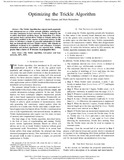- CERES Home
- →
- Cranfield Defence and Security
- →
- Staff publications (CDS)
- →
- View Item
JavaScript is disabled for your browser. Some features of this site may not work without it.
| dc.contributor.author | Djamaa, Badis | |
| dc.contributor.author | Richardson, Mark A. | |
| dc.date.accessioned | 2015-01-16T14:55:11Z | |
| dc.date.available | 2015-01-16T14:55:11Z | |
| dc.date.copyright | (c) 2015 IEEE. Personal use of this material is permitted. Permission from IEEE must be obtained for all other users, including reprinting/ republishing this material for advertising or promotional purposes, creating new collective works for resale or redistribution to servers or lists, or reuse of any copyrighted components of this work in other works. | |
| dc.date.issued | 2015-01-16 | |
| dc.identifier.citation | This work has been published in IEEE Communications Letters vol 19 part 5 pp 819-822 | |
| dc.identifier.uri | http://dspace.lib.cranfield.ac.uk/handle/1826/9033 | |
| dc.description.abstract | The Trickle Algorithm has enjoyed much popularity and widespread as a basic network primitive ensuring low-cost data consistency in lossy networks. Trickle was shaped by the so called short-listen problem hence imposing a listen-only period. Such a period allows Trickle to robustly address the short-listen problem but at the expense of increased latency. In this letter, we introduce a simple yet powerful optimization to Trickle that can dramatically decrease Trickle’s latency with virtually no extra overhead to its robustness and scalability. Extensive simulation and testbed experiments are reported here with greater than a factor of 10 times decrease in propagation time. | en_UK |
| dc.language.iso | en | en_UK |
| dc.title | Optimizing the trickle algorithm | en_UK |
| dc.type | Article | en_UK |
Files in this item
This item appears in the following Collection(s)
-
Staff publications (CDS) [1209]
